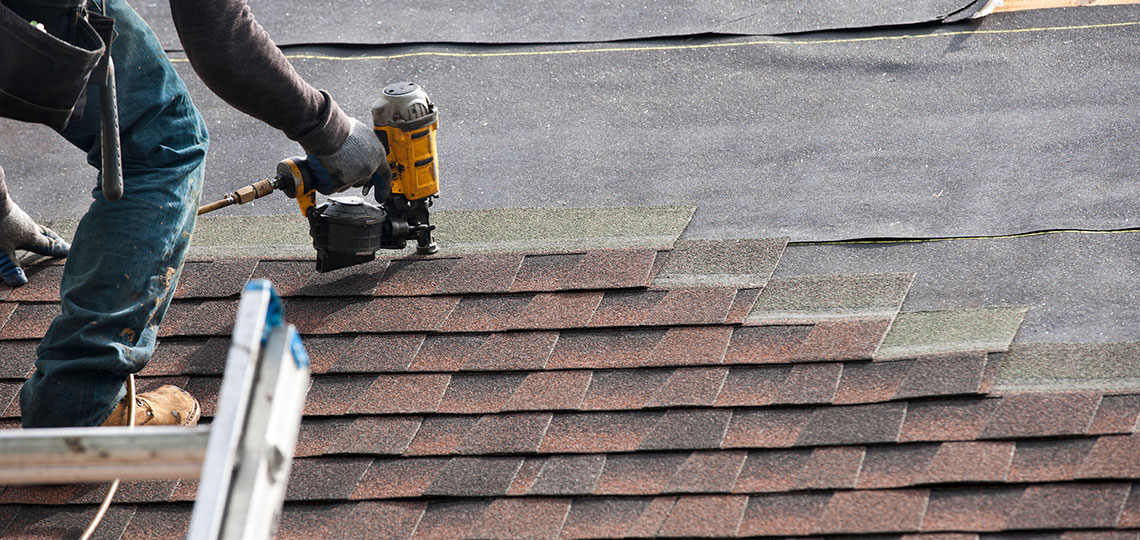The Significance of Picking Knowledgeable Roofing Companies Gainesville Florida
The Significance of Picking Knowledgeable Roofing Companies Gainesville Florida
Blog Article
Best Practices for Ensuring Proper Roof Covering Air Flow
Guaranteeing appropriate roof covering ventilation is critical for the durability and efficiency of a roof covering system. A well balanced intake and exhaust vent proportion, frequently 1:300, plays a pivotal function, with consumption vents ideally put at the reduced edge of the roof covering for trendy air entrance and exhaust vents at the optimal for cozy air leave. Regular evaluations to recognize clogs and preserve clear airflow are critical. Keeping insulation away from vents is essential to stop airflow restriction. Comprehending these foundational aspects establishes the stage for more in-depth understandings right into installation and upkeep practices that can considerably improve your roof's efficiency.
Understand Air Flow Basics
Properly comprehending air flow essentials is important for guaranteeing the durability and efficiency of roof. Reliable air flow mitigates dampness build-up and temperature extremes in the attic, both of which can result in substantial architectural damages over time. A well-ventilated roof covering helps in protecting against typical problems such as mold growth, wood rot, and ice dams, which can jeopardize the stability of the roofing products and the underlying structures.
The primary objective of ventilation is to help with the motion of air, enabling for a constant exchange in between the interior and exterior settings. This balance is accomplished through a mix of consumption and exhaust vents that work with each other to keep optimum air flow. Consumption vents, generally situated along the soffits or eaves, allow fresh air to go into the attic room area, while exhaust vents, commonly positioned at or near the roofing system ridge, enable hot, humid air to leave.
Key variables affecting the performance of roofing air flow consist of proper positioning, ample sizing, and making certain that both intake and exhaust vents are unhampered. Normal evaluation and upkeep are important to determine prospective obstructions, damage, or inefficiencies in the ventilation system, therefore securing the roofing's performance and sturdiness.
Sorts Of Roof Covering Vents
Roofing system vents play an important role in preserving effective attic ventilation and, by extension, the general health of the roofing system. Various kinds of roofing vents are available, each with unique benefits customized to certain roofing needs. Ridge vents, for instance, are installed along the roof's height, allowing warm, moist air to escape from the attic. They use continual air flow and blend seamlessly with the roofline, making them both efficient and visually pleasing.

Soffit vents are installed under the eaves and operate in tandem with roof vents to ensure a well balanced intake and exhaust system. By allowing cooler air to enter from below, soffit vents promote the expulsion of warm air via top vents. Gable vents, situated on the exterior wall surfaces of the attic, deal an additional effective service, specifically in homes with saddleback roofs.
Examine Your Present Air Flow

Next, take into consideration the age and problem of your roof covering materials and ventilation components. Older systems might not follow current building ordinance or might have worn away gradually, lowering their efficiency. Conduct a comprehensive evaluation to recognize any type of indications of damage, such as corrosion, damages, or voids that could jeopardize the system's efficiency.
Additionally, determine the attic room temperature level and moisture levels. High temperature levels and moisture can show inadequate ventilation.
Installation Best Practices
Efficient setup of roofing ventilation systems is vital for guaranteeing optimal efficiency and durability. Proper installation starts with understanding the particular air flow requirements of the roof and the building it covers. This includes computing read the full info here the correct ratio of intake to exhaust vents, generally sticking to the 1:300 rule, which stipulates one square foot of ventilation for every 300 square feet of attic flooring room.

Consumption vents ought to be set up at the roofing's reduced edge, often in the soffits, to allow trendy air to enter. Exhaust vents, on the various other hand, must be mounted near or at the roof's top to assist in the exit of warm, damp air.
Seal all vent connections meticulously to stop air leakages and possible water seepage. Use high-grade products and follow manufacturer guidelines to guarantee toughness and efficiency. In addition, integrating ridge have a peek at these guys vents with baffles can dramatically boost airflow effectiveness by stopping wind-driven rainfall and snow from entering the attic.
Inevitably, specific installation of roof covering ventilation systems mitigates prospective issues such as mold growth, ice dams, and structural damages, guaranteeing the roof's stability and the building's total wellness.
Routine Upkeep Tips
Consistency in maintenance methods is fundamental to ensuring the long-term efficiency of roofing air flow systems. Throughout these examinations, make certain that vents are complimentary of particles, nests, and various other obstructions that could impede airflow.
Make use of a soft brush or a vacuum cleaner to get rid of dirt and particles from consumption and exhaust vents. Be cautious not to harm the vent displays or louvers during the process.
Correct insulation is just as vital. Ensure that attic room insulation does not block the vents, as this can drastically limit airflow. Reposition or change it to keep an efficient barrier. if any type of insulation has shifted or settled.
Lastly, change any type of gainesville roofing companies harmed or missing out on components promptly. Damaged vents, broken tiles, or worn-out blinking can all add to inadequate air flow and ought to be addressed right away. Normal maintenance makes sure that the roof covering ventilation system functions ideally, thus prolonging the life expectancy of the roof itself.
Final Thought
Making sure appropriate roof covering ventilation is paramount for keeping the efficiency and durability of a roof covering system. Adherence to the 1:300 intake and exhaust vent ratio, combined with the calculated positioning of vents, is vital.
A well balanced intake and exhaust vent ratio, frequently 1:300, plays an essential function, with intake vents ideally put at the reduced edge of the roofing system for trendy air access and exhaust vents at the peak for warm air exit. Consumption vents, commonly situated along the eaves or soffits, permit fresh air to get in the attic room space, while exhaust vents, commonly located at or near the roofing ridge, enable warm, damp air to escape.
Soffit vents are installed under the eaves and job in tandem with roofing vents to make certain a well balanced intake and exhaust system. By enabling cooler air to go into from below, soffit vents promote the expulsion of warm air through upper vents. Adherence to the 1:300 intake and exhaust air vent proportion, paired with the critical positioning of vents, is vital.
Report this page